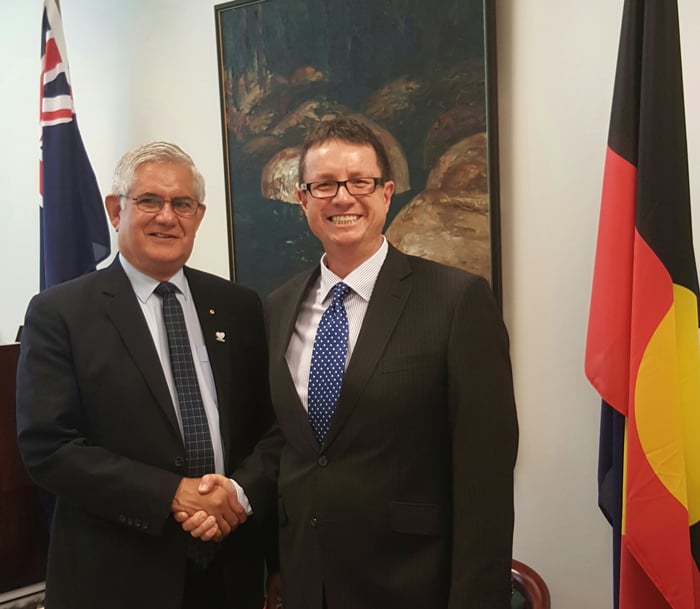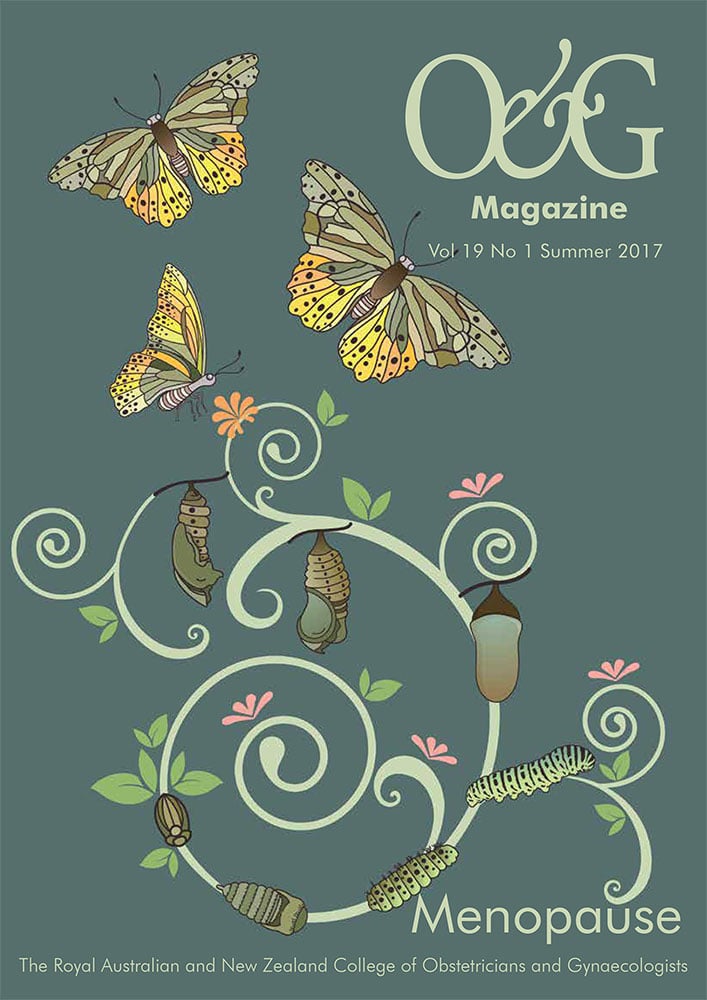Already we find ourselves well into 2017, and the autumn issue of O&G Magazine. This issue is devoted to the very important topic of menopause. Many of you – older Fellows like me anyway! – will remember the media reporting of the Womens Health Initiative study’s hormone replacement therapy results. Menopause is a topic of the highest importance in women’s health, so it is wonderful to see such a relevant set of articles. In this issue, you will be able to read about a spectrum of matters from fertility management in premature ovarian failure to osteoporosis. As always, the O&G Magazine Advisory Group have managed to source articles from the best and brightest in this important field.
Another year, another maternity framework
Australia, like New Zealand, is one of the safest places in the world to give birth and to be born. This happy situation is the result of many years of collaborative effort and owes much to community health in general, excellent pre-pregnancy care by general practitioners, skilled collaborative care by a range of health professionals during pregnancy and birth, and high-quality care in the postnatal period. We have an enormous amount to be proud of.
Recent investigations, widely reported in the media, about maternity services where collaboration has failed – Rockhampton in Queensland, Bacchus Marsh in Victoria, and elsewhere – continue to highlight the critical importance of collaboration between all those who provide collaborative care. For this reason, I am deeply disappointed and concerned by the decision of those responsible for the National Framework for Maternity Services to exclude obstetricians from the Working Group developing the framework.
I have been working with a group of senior College Fellows to ensure that the voice of obstetricians is heard. I have contacted the Chair of the Maternity Framework group, as well as responsible Health Ministers. I have also worked on this issue with the Federal President of the AMA, and College Fellow, Dr Michael Gannon, and the President of NASOG, Dr Gary Swift. By the time you have read this, a College group will have met with the members of the Working Party, and I can assure all Fellows, GP obstetricians and trainees, that our voice will be heard. I will keep you updated.
MBS Review
We are all interested in the progress of the MBS Review, and now that the recommendations on maternity care have been submitted to the Health Department, work on the gynaecology section of the MBS continues. I would like to thank Prof Michael Permezel and all College Fellows and Diplomates who are involved in this review for their efforts. Each of the discipline groups are busy reviewing the MBS item numbers and the overarching review group meet in mid-February. Again, this is an area I will keep you updated on.
Health needs of vulnerable women
As I have mentioned, Australia and New Zealand are fortunate to have some of the highest standards of healthcare for women of any place in the world. This is a credit to the enormous enthusiasm so many Fellows have for their work and responsibilities. However, there are still many areas where there is substantial room for advance and improvement. I would like to briefly outline these for you.

RANZCOG President Prof Steve Robson meeting with Assistant Minister for Health and Aged Care, Hon Ken Wyatt, at his office in Parliament House. The health and wellbeing of Indigenous women must be a high priority for the College.
Indigenous women
Indigenous Australians face many disadvantages, and you will all be aware that maternity outcomes are particularly concerning. I have met with Minister Ken Wyatt, who has responsibility for Aboriginal Health, and his staff with a view to setting up a multidisciplinary group to try to move forward in this important area. I am delighted that Dr Marilyn Clarke has stepped in to Chair the College Aboriginal and Torres Strait Islander Women’s Health Committee – taking over from Dr Jacqueline Boyle who was a wonderful and hardworking Chair – and I have high hopes that we can work together to achieve something for Indigenous women.
Migrant and Refugee women
A million women in Australia do not have English as their first language. Women who have come to Australia from elsewhere in the world face great challenges in accessing good healthcare. To help address this, your College has received funding from the Commonwealth Government, the Paul Ramsay Foundation and other generous donors to develop a plan for better access to healthcare for this large and very important group of women and their families. A diverse and committed working group met at College House late last year, and there is an atmosphere of friendly and determined collaboration. The group is doing great work and, again, I will keep you updated.
Violence against women
Violence is one of the leading causes of maternal mortality in our community, but this is only the tip of a very large iceberg. Many of you will have read of the terrible assault on one of our trainees last year – it was very widely reported in the media and made international headlines. This made the problem very personal and it is an area in which the College is in a position to now do more. I am setting up a working party to examine ways we can raise awareness of violence against women and to engage the College fully in this area. The issue of violence will be of concern to all of you, and we have the resources to make an impact. Over the course of the year, expect to hear more about this issue and how we all can help.
‘Australia and New Zealand are fortunate to have some of the highest standards of healthcare for women of any place in the world. This is a credit to the enormous enthusiasm so many Fellows have for their work and responsibilities.’
Clinical variation
Clinical variation is the phenomenon of different rates of treatment – typically surgery – in different regions that is not explained by differences in the prevalence of disease. The Atlas of Clinical Variation has been developed by the Australian Commission on Safety and Quality in Health Care (ACSQHC) and documents the varying uptake of a number of key procedures and treatments across Australia. There are obviously many reasons for such variation and it is foolish to take rates of clinical practice at face value. However, procedures that have considerable variation – they are commonly performed in some areas, uncommon in others – definitely should lead to further analysis.
In some cases, lack of leadership from the College in the form of an ambiguous confusion of clinical guidance may be to blame. As the Chair of the Women’s Health Committee for four years, it certainly could be my fault! I am meeting with representatives from ACSQHC regularly to review current data and plan future data collections. I hope these will assist us with being able to help you in your management of patients. An algorithm regarding stepwise management of menorrhagia is under development, for example, and I should be able to bring you more information about this soon. In the meantime, you can access the Atlas yourself via the ACSQHC website.
Get with the program
From the start of May this year, the Renewed Cervical Screening Program will begin. Most of you will know that we are moving from second-yearly cytology-based screening to five-yearly DNA-based screening. Along with the Renewal come a number of new guidelines, algorithms and reporting requirements. In this issue of O&G Magazine, information about these exciting changes is presented. Please make sure you read the information, and familiarise yourself with the changes to the patient program.






Leave a Reply